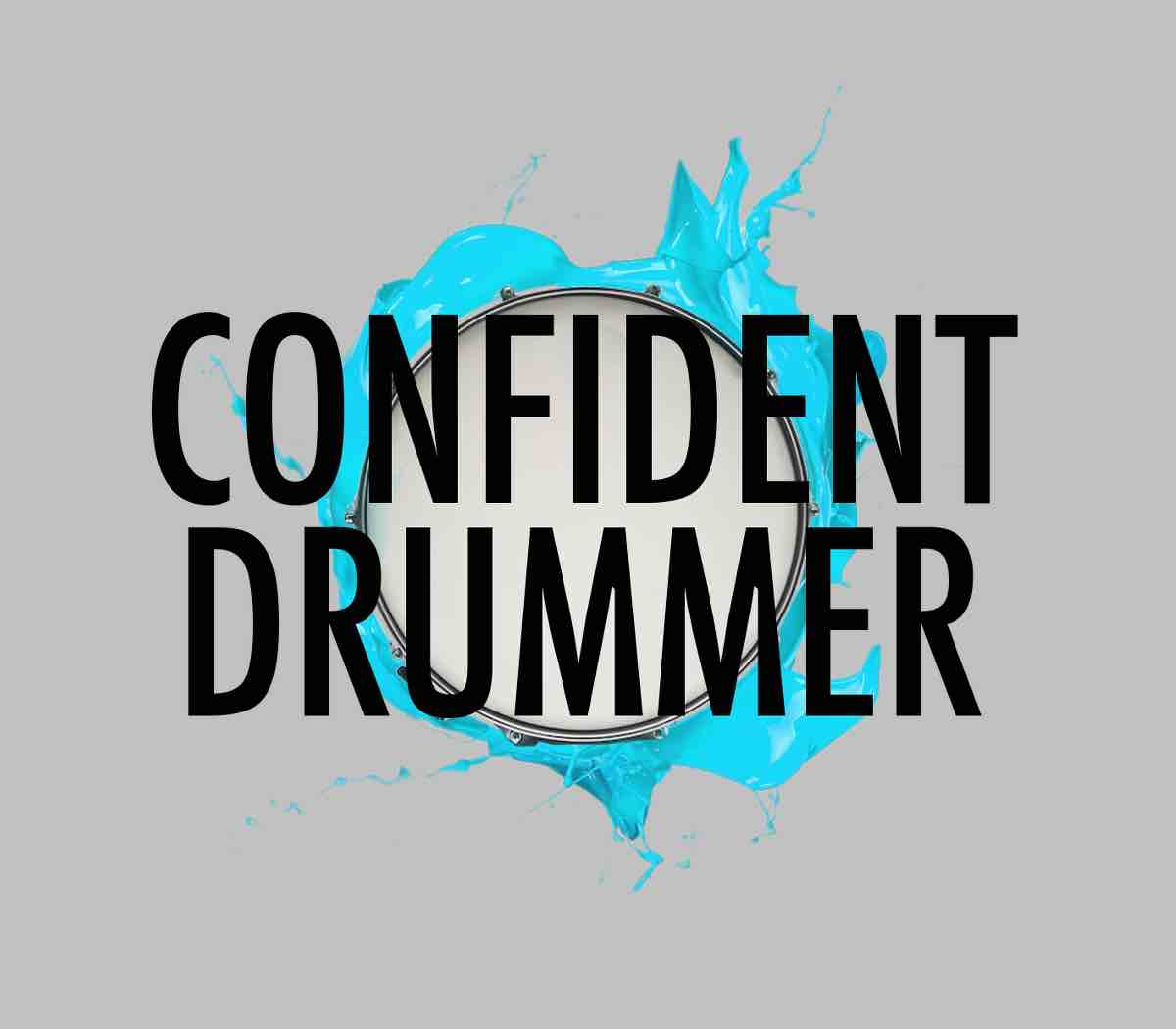Becoming a good drummer is a very interesting endeavour. There are so many things that come into play, and it can be confusing and even frustrating trying to identify what’s really important and what could be a waste of time. One thing that I’ve learned in my experience in the music business, is that being a good player is just the starting point.
Of course we need to have good technique, style, timing, feel… so that’s a given. Instead, what we especially need to be able to do is to be creative, original and unique. I mean, of course we are all unique individuals, and therefore one-of-a-kind musicians.
But, given how crucial this aspect is, and since we are talking about making art and communicating emotions, I believe uniqueness is something that needs to be addressed, so that we can shape it consciously instead of leaving it to chance, and risking that our uniqueness is not that unique ;).
That’s why this is a very important step toward the definition of our artistic identity.
First of all, it’s always about awareness. What if we don’t realize that we have the same style as everybody else, the same approach, the same sound even? Then it’s obvious that we will never stand out. The reason I’m stressing this point is not because we need to stand out in the sense of becoming ‘famous’.
We want to do it from the position of being individual artists, who have something to say, and want to connect to as many people as possible. That’s the meaning of communication, and that’s what art is about.
One crucial aspect of our uniqueness is sound. In the same way that a person’s voice is part of what makes us recognize that person, the same is true for our sound as musicians. Of course, continuing with that analogy, it’s what people say that makes the message meaningful.
But also, it’s how they say it. And part of that ‘how’ is the sound. We can literally fall in love with somebody’s voice. That’s what we ideally want to achieve with our sound as drummers.
Here I would like to give you a few ideas about how to use all the variables available to us, and how to combine them to develop a distinctive, interesting and beautiful tone. Once we understand all the options we have, we just need to commit some time to studying these possibilities and gradually come up with something that we like, we identify with, and we feel comfortable with. The combinations are endless, so the key word here is experimentation!
There are no perfect drums, cymbals, sticks, heads, tuning. There’s just what works for you. To figure that out, you need two simple ingredients: using your ears to determine what you enjoy, and then experimenting until you separate what is good from what isn’t, according to your taste.

These are some of the variables involved, to investigate:
– Drums: metals, woods, sizes, thickness, depth, hoops, wires… sooo much choice. And just modifying the Snare wires tension changes the way the whole kit sounds… amazing. After you have learned all you can about each of these elements, you can test a number of original solutions: have you ever tried to play Rimshots on Toms? Or to use the shell of your Floor Tom to keep time? One fresh and always interesting idea is to put some kind of object on one or more of your drums, so that it rattles and produces an extra layer of sound when we play them. As opposed to putting blankets on the Snare Drum or even over the entire kit, and make it sound like it’s underwater (that, believe it or not, has also been tried).
– Heads: single ply, double ply, coated, clear, vintage. Just realize you could experiment with any of these on each drum, creating limitless sounds. You could even put a second head on top of the tuned one, for an immediately fatter and more staccato timbre.
– Tuning: that’s an art form in and of itself, and unfortunately too many drummers aren’t really clear about how to do it properly. Being able to tune our drums is also important in pro situations, where we may be asked to eliminate an unwanted resonance or to get a specific sound.
– Cymbals: recently cymbal producers have gone completely crazy. They create the most beautiful looking and sounding pieces of metal we can ever dream of. However we don’t necessarily have to be rich and buy dozens of them to be happy. We can stack cymbals, cut old or broken ones to make bells of special effects, we can tape them to make them drier, we can turn a couple of big Crashes into a huge Hi-Hat (or two 10” Splashes into a mini Hi-Hat), we can extract ten new sounds from a Ride cymbal by hitting it differently and with different parts of the stick. We can also try the conventional but still cool idea of putting a Splash on a drumhead and creating peculiar sounds with that.
– Setup: just adding a left side Floor Tom can completely revolutionize your sound (and phrasing). Also adding effect cymbals here and there can be a huge source of inspiration. Using more than one Snare Drum, or more than one Bass Drum in the same setup is great. We can try the craziest things: for instance, I recently saw a video of a guy who switched Bass Drum and Snare. He placed the Snare on the floor and his Bass Drum on a stand… genius. Also, a few years ago I’ve seen the great Toss Panos playing the music stand as part of his Drum Set… during a show! And it sounded great. Just to let you know what’s possible, or impossible ;). The idea is that we hit surfaces, which are nothing but sound sources. Who says that those sound sources are limited to conventional drums and cymbals?
– Beaters: also, who says we only play with sticks and brushes? Ok, it’s good to experiment with all stick sizes, brands, materials, tip shapes and so on, since we play with drumsticks most of the time. But then there’s so much more to try. First of all, we could play with bare hands, and some drummers are amazing at doing that. But also, there are dozens of different beaters, and each of them is a new universe to explore. One little suggestion: have you ever tried playing a Shaker with one hand, while playing a groove with a stick in the other hand? Have you ever tried to hit a Crash with a Shaker?
– Electronics: huge topic. I love electronic percussions. Buy one sample pad and you can include any sound you like in your performance. That’s amazing. There are also percussion synthesizers that allow you to devise original sounds. I’m more into hybrid kits than completely acoustic or electronic kits, but that’s also a personal choice.
– Percussions: talking about hybrid kits, we can create any mixture of drums and percussions we like, and even shape our technique around the particular Drum Set that we assemble. We can go as far as putting together modern drums with Congas and Timbales, or do as little as laying a seed shell Shaker on our Floor Tom for that extra rattling sound (as mentioned above).
– Grips: the way we hold the sticks also determines our tone. It’s an important subject that deserves a dedicated article. Here let’s just keep in mind this idea: sound is vibration. No vibration, no sound. Therefore, based on how tight or loose we hold the stick, and whether we bury it into the sound source or let it come off of it, the sound we produce will be dramatically affected.
So, once we have had some fun with these possibilities, and since music is art and creation, we can push the boundaries of what has been done so far and experiment beyond it, inventing stuff that didn’t exist before.
However, to avoid getting lost in these experiments, I recommend that after becoming acquainted with the most common solutions, you start to define what your preferences are and what your identity is. It’s important to make choices and simplify things. For instance, do you like electronics of not? Is a hybrid kit even an option for you, or you don’t want to go in that direction? Also, how do you like an open sound, a high tuning, a dry set of cymbals? Do you prefer to play loud or soft music?
We all need to clarify what our purpose is when we sit behind the drums. Because that gives us a direction and helps making what we have to say sharper and more likely to touch the listener.
Some could argue that these questions should be asked before starting to experiment. I believe that, even if doing it later makes the process quite longer, this is the way to really discover and develop our sound concept.
In the same way that we cannot know if we enjoy a certain food unless we try it, we can’t be sure we don’t like a sonic option unless we go for it first. Only then our choice will be informed, rather than based on a preconceived notion.
Now go unleash your imagination, and design your own sound.
Related resources:
‘Essential Styles – Expanding Your Versatility On The Drums’
‘Drums & Sounds’ – Altitude Drumming – Volume 12
‘Art & Musicianship’ – Altitude Drumming – Volume 10


















